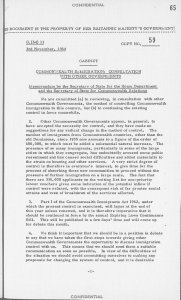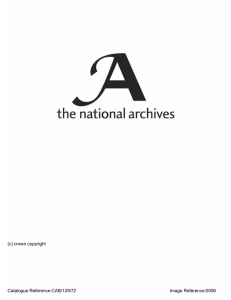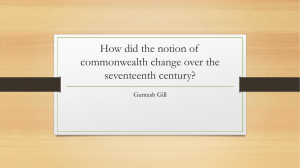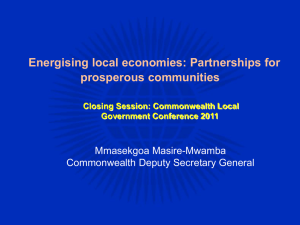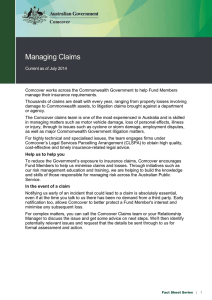Figure 1. Increases in Health Insurance Premiums Compared to Other Indicators, 1988–2005 Percent
advertisement
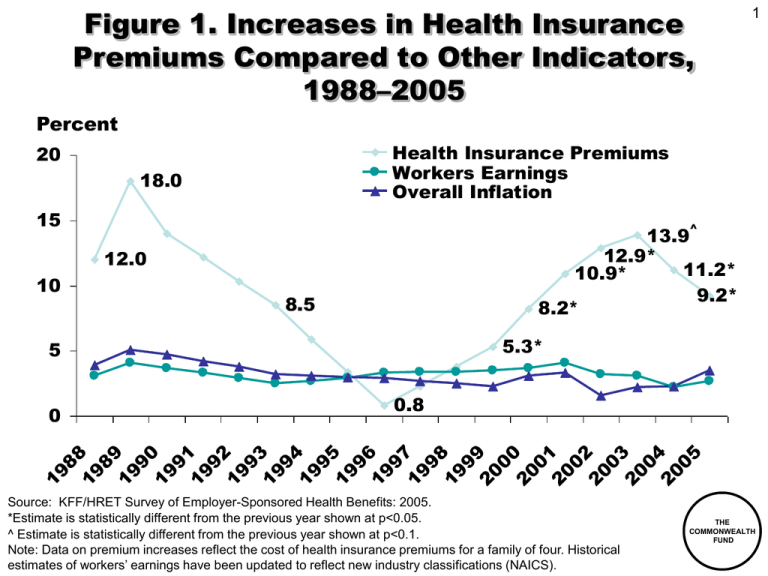
Figure 1. Increases in Health Insurance Premiums Compared to Other Indicators, 1988–2005 1 Percent Health Insurance Premiums Workers Earnings Overall Inflation 20 18.0 15 ^ 13.9 12.9* 11.2* 10.9* 9.2* 8.2* 12.0 10 8.5 5.3* 5 Source: KFF/HRET Survey of Employer-Sponsored Health Benefits: 2005. *Estimate is statistically different from the previous year shown at p<0.05. ^ Estimate is statistically different from the previous year shown at p<0.1. Note: Data on premium increases reflect the cost of health insurance premiums for a family of four. Historical estimates of workers’ earnings have been updated to reflect new industry classifications (NAICS). 05 20 04 20 03 20 02 20 01 20 00 20 99 19 19 97 19 96 19 95 19 94 19 93 19 92 19 91 19 90 19 89 19 88 19 98 0.8 0 THE COMMONWEALTH FUND Figure 2. Deductibles Rise Sharply, Especially in Small Firms, Over 2000–2005* 2 PPO in-network and out-of-network deductibles $900 2000 $750 676 $600 510 469 383 $450 $300 2005 210 254 319 157 $150 $0 In-network Out-network Small Firms, 3-199 Employees InOut-network network Large Firms, 200+ Employees *Out-of-network deductibles are for 2000 and 2004. Source: J. Gabel and J. Pickreign, Risky Business: When Mom and Pop Buy Health Insurance for Their Employees (Commonwealth Fund, April 2004); KFF/HRET Employer Health Benefits 2005 Annual Survey. THE COMMONWEALTH FUND Figure 3. Percent of Firms Offering Health Benefits Declined Over 2000–2005 3 Percent of firms offering health benefits 75 69 68 66 66 63 2002 2003 2004 60 50 25 0 2000 2001 2005 THE COMMONWEALTH FUND Source: KFF/HRET Employer Health Benefits 2005 Annual Survey. Figure 4. 46 Million Uninsured in 2004; Increasing Steadily Since 2000 Number of uninsured, in millions 60 40 33 31 33 35 35 39 40 40 43 41 42 44 4 56 40 40 41 44 45 20 0 1987 1990 1993 1996 1999* 2002 2005 2008 2011 2013 Projected *1999–2003 estimates reflect the results of follow-up verification questions and implementation of Census 2000-based population controls. Note: Projected estimates for 2004–2013 are for nonelderly uninsured based on T. Gilmer and R. Kronick, “It’s the Premiums, Stupid: Projections of the Uninsured Through 2013,” Health Affairs Web Exclusive, April 5, 2005. Source: U.S. Census Bureau, March CPS Surveys 1988 to 2005. THE COMMONWEALTH FUND Figure 5. Greater Out-of-Pocket Costs are Not Associated with Lower Health Spending in Cross-National Comparisons 5 National Health Expenditures per Capita, US$ 6000 United States 5000 4000 3000 Netherlands 2000 1000 Germany Canada Australia France OECD Median Japana New Zealand 0 a 0 a2002 100 200 300 400 500 600 700 800 900 Out-of-Pocket Health Care Spending per Capita, US$ *Allan Hubbard, Director of the National Economic Council, February 14, 2006. Note: Adjusted for Differences in the Cost of Living, 2003. Source: Bianca K. Frogner and Gerard F. Anderson, “Multinational Comparisons of Health Systems Data, 2005,” The Commonwealth Fund, Forthcoming. THE COMMONWEALTH FUND Figure 6. Americans Are Spending More Out-of-Pocket for Health Care 6 Dollars spent per capita (in 2004 dollars) 900 $788 $774 800 700 600 500 400 $667 $577 $583 300 200 100 19 7 19 0 7 19 1 7 19 2 7 19 3 7 19 4 7 19 5 7 19 6 7 19 7 7 19 8 7 19 9 8 19 0 8 19 1 8 19 2 8 19 3 8 19 4 8 19 5 8 19 6 8 19 7 8 19 8 8 19 9 9 19 0 9 19 1 9 19 2 9 19 3 9 19 4 9 19 5 9 19 6 9 19 7 9 19 8 9 20 9 0 20 0 0 20 1 0 20 2 0 20 3 04 0 Source: C. Smith et al., “National Health Spending in 2004: Recent Slowdown Led by Prescription Drug Spending,” Health Affairs 25, no. 1 (January/February 2006); Centers for Medicare and Medicaid Services, National Health Expenditures Data; http://www.cms.hhs.gov/NationalHealthExpendData/downloads/tables.pdf THE COMMONWEALTH FUND Figure 7. Nearly One of Six Families Spent 10% or More of Income (or 5% or More if Low-Income) on Out-of-Pocket Medical Costs, 2001–02 7 Percent of families with high out-of-pocket medical costs relative to income, not including premiums Spent >10% of income 20 Spent >10% of income, or >5% of income if low-income* 15 12 10 11 8 0 1996–97 2001–02 *Low-income includes families with incomes <200% of the federal poverty level. Source: M. Merlis, D. Gould and B. Mahato, Rising Out-of-Pocket Spending for Medical Care: A Growing Strain on Family Budgets (New York: The Commonwealth Fund) February 2006. THE COMMONWEALTH FUND Figure 8. Cost-Sharing Reduces Use of Both Essential and Less Essential Drugs and Increases Risk of Adverse Events Percent reduction in drugs per day Elderly 22 10 Elderly 140 120 20 15 Percent increase in incidence per 10,000 Low Income 25 14 15 100 Low Income 117 97 78 80 9 8 43 60 40 5 20 0 0 Essential Less Essential Adverse Events ED Visits Source: R. Tamblyn et al., “Adverse Events Associated With Prescription Drug Cost-Sharing Among Poor and Elderly Person,” JAMA 285, no. 4 (2001): 421–429. THE COMMONWEALTH FUND Figure 9. Few Insured People Are Currently Covered by High Deductible Health Plans (HDHP) or Consumer Directed Health Plans (CDHP) with a Savings Account CDHP 1% 9 HDHP 9% Comprehensive 89% Note: Comprehensive = plan w/ no deductible or <$1000 (ind), <$2000 (fam); HDHP = plan w/ deductible $1000+ (ind), $2000+ (fam), no account; CDHP = plan w/ deductible $1000+ (ind), $2000+ (fam), w/ account. Source: P. Fronstin, S.R. Collins, Early Experience with High-Deductible and Consumer-Driven Health Plans: Findings From the EBRI/Commonwealth Fund Consumerism in Health Care Survey, EBRI Issue Brief, December 2005. THE COMMONWEALTH FUND Figure 10. FEHBP HDHP/HSAs Plans Enroll 7,500 out of 9 Million Covered Lives 10 Percent 25 20 15 10 6.4 5 0.1 0 Percent of FEHBP plans that are HDHP/HSAs Percent of FEHBP enrollees that are in HDHP/HSAs Note: As of March 2005. Source: Government Accountability Office, Federal Employees Health Benefits Program First-Year Experience with High-Deductible Health Plans and Health Savings Accounts, Washington, DC: GAO, January 2006; OPM, http://www.opm.gov/insure/handbook/FEHBhandbook.pdf THE COMMONWEALTH FUND Figure 11. Enrollees Who Chose HDHPs From the Federal Employees Health Benefits Program Are More Likely to Earn Higher Incomes 11 Percent of FEHBP enrollees with incomes ≥ $75,000 75 50 43 23 25 0 HDHP All FEHBP plans Source: Government Accountability Office, Federal Employees Health Benefits Program First-Year Experience with High-Deductible Health Plans and Health Savings Accounts, Washington, DC: GAO, January 2006. THE COMMONWEALTH FUND Figure 12. Age Distribution of HDHP and Other FEHBP Enrollees 12 Percent FEHBP enrollees HDHP enrollees 35 All FEHBP enrollees 30 25 20 15 10 5 0 <23 23-34 35-44 45-54 55-64 65-74 75-99 Source: Government Accountability Office, Federal Employees Health Benefits Program First-Year Experience with High-Deductible Health Plans and Health Savings Accounts, Washington, DC: GAO, January 2006. >99 THE COMMONWEALTH FUND Figure 13. Less than Half of Those Enrolled in Employer-Based High Deductible Health Plans Had a Choice Percent of adults with employer-based coverage who were offered a choice of health plans 75 58 50 47 45 CDHP (n=134) HDHP (n=334) 25 0 Traditional (n=1016) 13 • CDHP and HDHP owners are less likely to have a choice of plans from their employer • When they have a choice, the savings account is the leading reason for choosing CDHP, while premium cost is the most frequent reason for choosing HDHP. Traditional plans are chosen for low out-ofpocket costs. Source: P. Fronstin, S.R. Collins, Early Experience with High-Deductible and Consumer-Driven Health Plans: Findings From the EBRI/Commonwealth Fund Consumerism in Health Care Survey, EBRI Issue Brief, December 2005. THE COMMONWEALTH FUND Figure 14. Enrollees of HDHP/CDHPs Are Less Satisfied with Their Coverage Percent Comprehensive 75 HDHP 14 CDHP 63 50 33* 42* 25 39* 28 32 29* 26* 8 0 Extremely or very satisfied Somewhat satisfied Not satisfied *Difference between HDHP/CDHP and Comprehensive is statistically significant at p ≤ 0.05 or better. Source: P. Fronstin, S.R. Collins, Early Experience with High-Deductible and Consumer-Driven Health Plans: Findings From the EBRI/Commonwealth Fund Consumerism in Health Care Survey, EBRI Issue Brief, December 2005. THE COMMONWEALTH FUND Figure 15. Enrollees of HDHP/CDHPs Are Less Satisfied with Out-of-Pocket Costs Percent Comprehensive HDHP 15 CDHP 75 50 25 57* 54* 42 36 12* 18* 31 28* 21 0 Extremely or very Somewhat satisfied satisfied Not satisfied *Difference between HDHP/CDHP and Comprehensive is statistically significant at p ≤ 0.05 or better. Source: P. Fronstin, S.R. Collins, Early Experience with High-Deductible and Consumer-Driven Health Plans: Findings From the EBRI/Commonwealth Fund Consumerism in Health Care Survey, EBRI Issue Brief, December 2005. THE COMMONWEALTH FUND Figure 16. Enrollees of HDHP/CDHPs Are Less Likely To Stay With Their Current Health Plan If They Had the Opportunity to Change 16 Percent of adults 21–64 Comprehensive 75 HDHP CDHP 61 46* 50 30* 25 28 37* 33* 33* 21 11 0 Extremely or very likely to stay Somewhat likely to stay Not likely to stay *Difference between HDHP/CDHP and Comprehensive is statistically significant at p ≤ 0.05 or better. Source: P. Fronstin, S.R. Collins, Early Experience with High-Deductible and Consumer-Driven Health Plans: Findings From the EBRI/Commonwealth Fund Consumerism in Health Care Survey, EBRI Issue Brief, December 2005. THE COMMONWEALTH FUND Figure 17. Enrollees of HDHP/CDHPs Are Less Likely to Recommend their Plan To a Friend or Co-Worker 17 Percent of adults 21–64 Comprehensive 75 50 25 HDHP CDHP 51 34* 22* 26 34* 31 43* 35* 24 0 Extremely or very likely Somewhat likely Not likely *Difference between HDHP/CDHP and Comprehensive is statistically significant at p ≤ 0.05 or better. Source: P. Fronstin, S.R. Collins, Early Experience with High-Deductible and Consumer-Driven Health Plans: Findings From the EBRI/Commonwealth Fund Consumerism in Health Care Survey, EBRI Issue Brief, December 2005. THE COMMONWEALTH FUND Figure 18. Workers are Less Satisfied When Their Costs Go Up – Employer Costs Go Down but at the Risk of Alienating Workers Dollars 4000 3000 Deductible contribution Premium contribution 18 $3,413 $2,823 553 2000 $1,779 1000 1348 $933 323 431 610 HSAqualified HDHP All plans^ 0 3413 Worker contribution 2270 HSAqualified HDHP All plans^ Employer contribution “All plans” refers to all conventional HMOs, PPOs, and POS plans in the survey, not just HDHP/HRA or HSAqualified HDHPs. Source: Calculated based on: G. Claxton et al., “What High Deductible Health Plans Look Like: Findings from a National Survey of Employers, 2005,” Health Affairs Web Exclusive, September, 14, 2005; J. Gabel et al., “Health Benefits in 2005: Premium Increases Slow Down, Coverage Continues to Erode,” Health Affairs, September/October 2004. ^ THE COMMONWEALTH FUND Figure 19. Enrollees of HDHP/CDHPs Spend Higher Percent of Income on Out-of-Pocket Medical Expenses and Premiums 19 Percent of adults 21–64 spending > 5% of income 100 10%+ of income 92* 5-9% of income 80 66 60 42* 40 20 0 3 h pr e m Co s en 12 9 ive 29* 13* HP HD 53* 31* 23* 9* HP CD Total 4 h pr e m Co s en 17 13 ive 35* 18* HP HD 58* 38* 26* 25 12* HP CD Health Problem 44* 34 (n = 90) 33* 10 h pr e m Co s en ive (n = 61) HP HD 21 HP CD <$50,000 Annual Income *Difference between HDHP/CDHP and Comprehensive is statistically significant at p ≤ 0.05 or better. Source: P. Fronstin, S.R. Collins, Early Experience with High-Deductible and Consumer-Driven Health Plans: Findings From the EBRI/Commonwealth Fund Consumerism in Health Care Survey, EBRI Issue Brief, December 2005. THE COMMONWEALTH FUND Figure 20. Enrollees of HDHP/CDHPs Are More Likely to Delay or Avoid Getting Health Care When Sick Due to Cost 20 Percent of adults 21–64 75 Comprehensive HDHP CDHP 48* 40* 50 31* 25 35* 31* (n = 61) (n = 90) 21 17 42* 26 0 Total Health Problem <$50,000 Annual Income *Difference between HDHP/CDHP and Comprehensive is statistically significant at p ≤ 0.05 or better. Source: P. Fronstin, S.R. Collins, Early Experience with High-Deductible and Consumer-Driven Health Plans: Findings From the EBRI/Commonwealth Fund Consumerism in Health Care Survey, EBRI Issue Brief, December 2005. THE COMMONWEALTH FUND Figure 21. Enrollees of HDHP/CDHPs Are More Likely To Skip Doses to Make Medications Last 21 Percent of adults 21–64 with prescriptions in last twelve months Comprehensive 60 35* 40 20 HDHP 26* 15 20 CDHP 32 29 (n = 85) 20 21 28 (n = 50) 0 Total Health Problem** <$50,000 Annual Income **Health problem defined as fair or poor health or one of eight chronic health conditions. Source: P. Fronstin, S.R. Collins, Early Experience with High-Deductible and Consumer-Driven Health Plans: Findings From the EBRI/Commonwealth Fund Consumerism in Health Care Survey, EBRI Issue Brief, December 2005. THE COMMONWEALTH FUND Figure 22. Enrollees of HDHP/CDHPs Are More Likely to Not Fill a Prescription Due to Cost 22 Percent of adults 21–64 75 Comprehensive HDHP CDHP 50 25 26* 16 33* 20 26 (n = 90) 21 27 32 25 (n = 61) 0 Total Health Problem <$50,000 Annual Income *Difference between HDHP/CDHP and Comprehensive is statistically significant at p ≤ 0.05 or better. Source: P. Fronstin, S.R. Collins, Early Experience with High-Deductible and Consumer-Driven Health Plans: Findings From the EBRI/Commonwealth Fund Consumerism in Health Care Survey, EBRI Issue Brief, December 2005. THE COMMONWEALTH FUND Figure 23. People with Higher Deductibles More Likely to Have Medical Debt or Problems Paying Medical Bills in Past Year, by Size of Deductible 23 Percent of adults ages 19–64 with any medical bill problem or outstanding debt* 60 54 ^ 46 ^ 39^ 40 24 20 0 $1,000 or more $500–$999 $1–$499 None Size of deductible Note: Adjusted percentages based on logistic regression models; controlling for health status and income. *Problems paying/not able to pay medical bills, contacted by a collection agency for medical bills, had to change way of life to pay bills, or has medical debt being paid off over time. THE COMMONWEALTH FUND ^Significant difference at p < .05 or better; referent category = no deductible. Source: The Commonwealth Fund Biennial Health Insurance Survey (2003). Figure 24. Increased Health Care Costs Have Reduced Savings 24 Has increased spending on health care expenses in the past year caused you to do any of the following? Among those with health insurance coverage who had increases in health care costs in the last year (n=731) (percentage saying yes) Decrease your contributions to other savings 45% 34% Have difficulty paying for other bills Use up all or most of your savings 29% Decrease your contributions to a retirement plan, such as a 401(k), 403(b) or 457 plan, or an IRA 26% Have difficulty paying for basic necessities, like food, heat, and housing Borrow money 24% 18% THE COMMONWEALTH FUND Source: EBRI Health Confidence Survey, 2005. Figure 25. Most Insured Do Not Have Quality and Cost Information to Make Informed Choices Comprehensive HDHP/CDHP 14% 16% 14 15 Doctors 16 12 Hospitals 15 12 Doctors 42 54 Hospitals 25 45 Doctors 15 36 (n = 76) Hospitals 14 32 (n = 76) 25 Health plan provides information on quality of care provided by: Doctors Hospitals Health plan provides information on cost of care provided by: Of those whose plans provide info on quality, how many tried to use it for: Of those whose plans provide info on cost, how many tried to use it for: Source: P. Fronstin, S.R. Collins, Early Experience with High-Deductible and Consumer-Driven Health Plans: Findings From the EBRI/Commonwealth Fund Consumerism in Health Care Survey, EBRI Issue Brief, December 2005. THE COMMONWEALTH FUND Figure 26. Cost Conscious Decision-Making, by Insurance Source 26 Percent of adults 21–64 who received health care in last twelve months 49 Checked whether plan would cover care 60* 43 Talked to doctor about treatment options & costs 55* Asked doctor to recommend less costly prescription drugs 27 44* 23 Checked price of service Comprehensive HDHP/CDHP 32* 14 Checked quality rating of doctor or hospital 19 0 25 50 *Difference between HDHP/CDHP and Comprehensive is statistically significant at p ≤ 0.05 or better. Source: P. Fronstin, S.R. Collins, Early Experience with High-Deductible and Consumer-Driven Health Plans: Findings From the EBRI/Commonwealth Fund Consumerism in Health Care Survey, EBRI Issue Brief, December 2005. 75 THE COMMONWEALTH FUND Figure 27. HSAs Won’t Solve the Cost Problem: Most Costs Are Concentrated in the Very Sick 27 Distribution of Health Expenditures for the U.S. Population, By Magnitude of Expenditure, 1997 0% 10% 20% 30% 40% 50% 60% 70% 80% 90% 100% Expenditure Threshold (1997 Dollars) 1% 5% 10% 50% U.S. Population 27% $27,914 55% $7,995 69% $4,115 97% $351 Health Expenditures Source: A.C. Monheit, “Persistence in Health Expenditures in the Short Run: Prevalence and Consequences,” Medical Care 41, supplement 7 (2003): III53–III64. THE COMMONWEALTH FUND Figure 28. Most Trusted Sources for Information on Health Care Providers, by Insurance Source 28 Percent of adults 21–64 43 42 Your doctor 20 Consumer group 25 15 16 Family member or friend Medical association 8 Comprehensive 10 HDHP/CDHP 6 Own health plan 4 2 2 Government or other agency 0 20 40 *Difference between HDHP/CDHP and Comprehensive is statistically significant at p ≤ 0.05 or better. Source: P. Fronstin, S.R. Collins, Early Experience with High-Deductible and Consumer-Driven Health Plans: Findings From the EBRI/Commonwealth Fund Consumerism in Health Care Survey, EBRI Issue Brief, December 2005. 60 THE COMMONWEALTH FUND Figure 29. Uninsured Rates High Among Adults with Low and Moderate Incomes, 2001–2005 29 Percent of adults ages 19–64 75 Insured now, time uninsured in past year Uninsured now 49 50 16 25 28 24 26 9 9 9 52 53 15 16 28 33 37 37 15 17 18 0 35 11 41 13 11 17 24 28 16 18 13 9 7 9 6 7 9 4 4 3 2 7 3 2001 2003 2005 2001 2003 2005 2001 2003 2005 2001 2003 2005 2001 2003 2005 Total Low income Moderate income Middle income High income Note: Income refers to annual income. In 2001 and 2003, low income is <$20,000, moderate income is $20,000– $34,999, middle income is $35,000–$59,999, and high income is $60,000 or more. In 2005, low income is <$20,000, moderate income is $20,000–$39,999, middle income is $40,000–$59,999, and high income is $60,000 or more. Source: S.R. Collins et al., Gaps in Health Insurance Coverage: An All-American Problem, Findings from The Commonwealth Fund Biennial Health Insurance Survey, The Commonwealth Fund, April 2006. THE COMMONWEALTH FUND Figure 30. Distribution of Uninsured Young Adults 19–29 by Poverty Status, 2004 200% FPL or more 31% 30 Less than 100% FPL 40% 100%– 199% FPL 29% Source: S.R. Collins, C. Schoen, J.L. Kriss, M.M. Doty, B. Mahato, Rite of Passage? Why Young Adults Become Uninsured and How New Policies Can Help, The Commonwealth Fund, updated May 2006. THE COMMONWEALTH FUND Figure 31. HSAs Won’t Solve the Uninsured Problem: Income Tax Distribution of Uninsured 5% (27% tax bracket) 31 1% (30%-39% tax bracket) 23% (15% tax bracket) 16% (10% tax bracket) 55% (0% tax bracket) Source: S.A. Glied, The Effect of Health Savings Accounts on Health Insurance Coverage, The Commonwealth Fund, April 2005. THE COMMONWEALTH FUND Figure 32. Medicare Physician Group Practice Demonstration • The Everett Clinic (WA) • Deaconess Billings Clinic • Park Nicollet Health Services (MN) • Marshfield Clinic (WI) • St. John’s Health System (MO) • Univ. of Michigan Faculty Group Practice • Geisinger Health System (PA) • Forsyth Medical (NC) • Middlesex Health (CN) • Dartmouth-Hitchcock Clinic • 10 physician group practices • 3-year project, began April 2005 • Bonus pool based on savings relative to local area • Practices expected to save 2%, keep up to 80% of additional savings • Actual bonuses depend on savings and quality targets Source: “Medicare Physician Group Practice Demonstration,” www.cms.gov, January 31, 2005. 32 THE COMMONWEALTH FUND Figure 33. Building Quality Into RIte Care Higher Quality and Improved Cost Trends Percent 160 Cumulative Health Insurance Rate Trend Comparison 140 120 100 RI Commercial Trend 80 60 • Quality targets and $ incentives • Improved access, medical home – One third reduction in hospital and ER – Tripled primary care doctors – Doubled clinic visits 40 20 33 RIte Care Trend 19 95 19 96 19 97 19 98 19 99 20 00 20 01 20 02 20 03 0 • Significant improvements in prenatal care, birth spacing, lead paint, infant mortality, preventive care Source: Silow-Carroll, Building Quality into RIte Care, Commonwealth Fund, 2003. Tricia Leddy, Outcome Update, Presentation at Princeton Conference, May 20, 2005. THE COMMONWEALTH FUND Figure 34. Lacking Health Insurance for Any Period Undermines Quality and Efficiency Percent of adults ages 19–64 with at least one chronic condition* Uninsured now 75 59 Insured now, time uninsured in past year 34 Insured all year 58 50 35 27 18 25 16 0 Skipped doses or did not fill Visited ER, hospital, or both for prescription for chronic condition chronic condition because of cost * Hypertension, high blood pressure, or stroke; heart attack or heart disease; diabetes; asthma, emphysema, or lung disease. Source: S.R. Collins et al., Gaps in Health Insurance Coverage: An All-American Problem, Findings from The Commonwealth Fund Biennial Health Insurance Survey, The Commonwealth Fund, April 2006. THE COMMONWEALTH FUND Figure 35. Adults Without Insurance Have More Problems With Lab Tests and Records 35 Percent of adults ages 19–64 reporting the following problems in past two years: Insured all year Uninsured during the year 75 50 25 15 23 10 19 19 26 30 41 0 Test results or Duplicate tests Never received Any lab test/ records not ordered lab/diagnostic test record problem available at time of results or delay in appointment receiving abnormal results Source: S.R. Collins et al., Gaps in Health Insurance Coverage: An All-American Problem, Findings from The Commonwealth Fund Biennial Health Insurance Survey, The Commonwealth Fund, April 2006. THE COMMONWEALTH FUND
